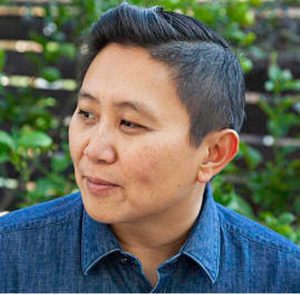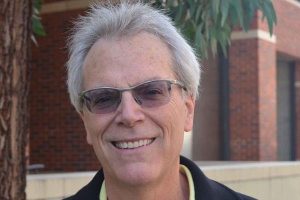By Nyah Marshall | Howard University News Service
Americans around the country, including legal scholars and Black women, are praising President Joe Biden’s announcement last week nominating Judge Ketanji Brown Jackson to replace Associate Justice Stephen Breyer on the U.S. Supreme Court. If confirmed, Jackson would make history as the first Black woman and the first former federal public defender to serve as a Supreme Court justice.
“For too long, our government, our courts haven’t looked like America,” Biden said at the White House, flanked by Vice President Kamala Harris and Judge Jackson.
“I believe that we should have a court that reflects the full talents and greatness of our nation with a nominee of extraordinary qualifications and that will inspire all young people to believe that they can one day serve our country at the highest level,” Biden said.
Jackson, 51, currently sits on the District of Columbia (D.C.) Court of Appeals and has broad judicial, academic and practical legal experience. She was three times confirmed by the Senate, twice unanimously, when picked to serve on the U.S. Sentencing Commission and when appointed by President Barack Obama to be on the D.C. Federal District Court.
In her acceptance speech, Jackson revealed that she shares a birthday with Constance Baker Motley, the first Black woman appointed to serve as a federal judge.
“Today, I proudly stand on Judge Motley’s shoulders, sharing not only her birthday, but also her steadfast and courageous commitment to equal justice under law,” Jackson said.
“Judge Motley – her life and career — has been a true inspiration to me, as I have pursued this professional path,” she explained. “And if I’m fortunate enough to be confirmed as the next Associate Justice of the Supreme Court of the United States, I can only hope that my life and career, my love of this country and the Constitution, and my commitment to upholding the rule of law, and the sacred principles upon which this great nation was founded, will inspire future generations of Americans.”
“Judge Ketanji Brown Jackson is an outstanding nominee,” said Danielle Holley-Walker, dean and professor at the Howard University School of Law, whose alumni include Supreme Court Justice Thurgood Marshall.
Holley-Walker said a noteworthy aspect of Jackson’s background is that she has devoted most of her career to serving the public. As a federal public defender, Jackson represented defendants on appeal who did not have the means to pay for a lawyer and worked to identify errors that occurred during their trials.
“I think one of the most important things for those of us who are interested in issues of justice and equality is that she served as a public defender, and she would not only be the first Black woman on the Supreme Court. She would also be the first public defender to ever serve on the Supreme Court,” she added.
Jackson was born in Washington, D.C., in 1970 and grew up in Florida with her parents who are both graduates of HBCUs. After graduating from Harvard, Jackson clerked for three federal jurists, including retiring Justice Stephen Breyer.
Later, she began representing clients in criminal and civil appellate matters at Goodwin Procter LLP, appearing before the Supreme Court in the case McGuire v. Reilly. In this case, she represented Massachusetts reproductive rights groups, arguing that the state law prohibiting anti-abortion protesters from harassing people seeking reproductive health care should be upheld.
During her seven years as a district judge, Jackson issued several rulings on topics like federal environmental law, employment discrimination and the Americans with Disabilities Act. The most notable one included Committee on the Judiciary v. McGahn, in which she ruled that Don McGahn, the former White House counsel to President Donald Trump, was required to testify before the House Judiciary Committee as part of its investigation into Russia’s interference in the 2016 election.
Jackson was involved in the case against Trump’s efforts to block the release of documents related to the Jan. 6 riot at the U.S. Capitol. A federal district judge in Washington rejected Trump’s request to block the disclosure of the documents, and the D.C. Circuit, in an opinion by Judge Patricia Millett that Jackson joined, upheld that ruling.
Biden’s announcement came nearly a month after Justice Stephen Breyer announced his retirement and two years to the day Biden pledged to appoint a Black woman as the next Supreme Court justice.
“I’m looking forward to making sure there’s a Black woman on the Supreme Court to make sure we in fact get everyone represented,” Biden said during the South Carolina primary in February 2020.
Biden’s selection of Jackson gives him a chance to deliver on this campaign promise to Black voters, who were crucial to his election win. In fact, 86% of Black women voters supported prioritizing such a nomination, according to a poll by Change Research and Higher Heights for America, an organization that describes itself aa a “political home” for Black women and allies to organize.
Biden met with at least three potential Supreme Court nominees, all of whom are Black women, before choosing Jackson. They included Leondra Kruger who sits on the California Supreme Court, and J. Michelle Childs, who sits on the U.S. District Court for the District of South Carolina.
“There were lots of exceptionally qualified capable women to choose from, but Biden’s selection of Judge Ketanji Brown Jackson demonstrates that there’s no need for America’s highest court to be off limits to Black women anymore,” said strategist and political commentator Donna Brazile, who is the Gwendolyn S. and Colbert I. King Endowed Chair in Public Policy at Howard University.
Jotaka Eaddy, founder of #WinWithBlackWomen (WWBW), shared similar sentiments. “With this nomination, President Biden and Vice President Harris will once again elevate a woman, and in this case, a Black woman, to a position that has long been covered by a cement ceiling,” Eaddy said in a statement. “Today that ceiling is shattered into a million pieces.”
Known for making a significant impact on the historic election of the nation’s first Black woman Vice President, #WinWithBlackWomen also stated that it will work to “ensure that Judge Jackson receives a fair and expeditious confirmation process.” WWBW is a collective of Black women leaders from public and private sectors committed to advancing and uplifting Black women, families and communities.
Though Jackson’s appointment would be historic, it will not change the ideological makeup of a Supreme Court that has a majority of conservative justices.
“We’ve only had seven justices in the entire history of the U.S. Supreme Court who have not been White men,” Holley-Walker explained. “So, I think it’s both an incredible day for our country, specifically for Black women, and also to have such a highly qualified nominee. We hope to see her confirmed in the way that is represented in terms of her credentials.”
Howard law professor Alice Martin Thomas also sees Jackson as a highly qualified nominee who will be a fair judge.
“I believe she’s a tenacious personality,” Thomas said. “I believe she will not shrink. And she’s going to have to stand up against a torrent of negativity and ugliness that we’ve all had to deal with. … She is more than capable and able of doing it graciously”
“She will advance her point of view. And she’ll be fair. That’s all we can ask of a judge. I’m also glad she’s young. She has her whole life in front of her,” Thomas concluded.
Nyah Marshall is a reporter and regional bureau chief for HUNewsService.com.
 Westside Story Newspaper – Online The News of The Empire – Sharing the Quest for Excellence
Westside Story Newspaper – Online The News of The Empire – Sharing the Quest for Excellence




